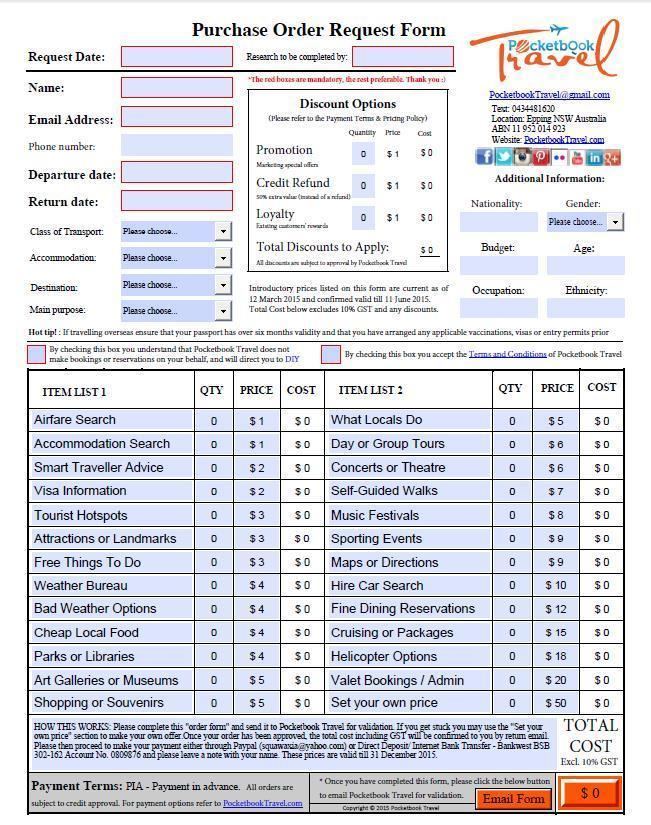 | ||
A purchase order (PO) is a commercial document and first official offer issued by a buyer to a seller, indicating types, quantities, and agreed prices for products or services. It is used to control the purchasing of products and services from external suppliers.
Contents
The issue of a purchase order does not initiate a contract. If no prior contract exists, then it is the acceptance of the order by the seller that forms a contract between the buyer and seller. Purchase orders can be an essential part of ERP system orders.
Overview
Companies use purchase orders for several reasons. Purchase orders allow buyers to clearly and explicitly communicate their intentions to sellers. They may also help a purchasing agent to manage incoming orders and pending orders. Sellers are also protected by PO's in case of a buyer's refusal to pay for goods or services.
Purchase orders provide benefits in that they streamline the purchasing process to a standard procedure. Commercial lenders or financial institutions may provide financial assistance on the basis of purchase orders. There are various trade finance facilities that almost every financial institution allows to business people against purchase orders such as:
- Before shipment credit facility
- Post shipment credit facility
- Trade finance facility
- Foreign bill purchase credit facility
- Bill retirement credit facility
- Order Confirmation
- Followup
The purpose of purchase orders is to procure materials for direct consumption or for stock, procure services, cover customer requirements using external resources, or procure a material that is needed in plants from an internal source (Long distance intra-plant stock transfers). They may also place once only procurement transactions and optimize purchasing by taking full advantage of negotiated conditions or for optimal utilisation of existing transport capacities.
Creating a purchase order is typically the first step of the purchase to pay process in an ERP system. Purchase orders may require a SKU code. Within an ERP system, a purchase order can be created manually, and may require confirmation or changes via editing. Within an ERP system (such as in SAP), manually creating a purchase order within the system may look something like "Logistics -> Materials Management -> Purchasing -> Purchasing Order -> Create" and providing a Transaction Code. This document type will be chosen from the screen. A vendor code lookup may need to be selected for a purchase order steps, as well as things like organization group and company code.
Legal
Although a typical purchase order may not contain contract language (in fact most contain little more than a list of the goods or services the buyer desires to purchase, along with price, payment terms, and shipping instructions), the purchase order is a specially regarded instrument regulated by the Uniform Commercial Code or other similar law which establishes a purchase order as a contract by its nature. Yet despite the nature of the purchase order as a contract, it is common to accompany the acceptance of a purchase order with a legal document such as the terms & conditions of sale, which establish specific or additional legal conditions of the contract.
The US Federal Acquisition Regulation states that purchase orders should generally be issued on a fixed-price basis, but provision is also made for unpriced purchase orders to be issued where "it is impractical to obtain pricing in advance of issuance of the purchase order".
Electronic purchase orders
Many purchase orders are no longer paper-based, but rather transmitted electronically over the Internet. It is common for electronic purchase orders to be used to buy goods or services of any type online.
There are lots of names/terms for Electronic Purchase Orders. It is sometimes known as: E-Procurement, E-Purchasing, E-Purchase Requisition. These terms are normally all referring to Electronic Purchase Orders.
Non-electronic purchase orders
The record of purchase order in most business firms are still on paper and thus there is a need for proper purchase order format. Many users wish to have professional formatting for purchase orders for several reasons. A company may wish to have a strong understanding of purchase transactions or to know the basic requirements of purchase order. It may also make it part of business documentation, which makes the process easier while keeping record of all transactions and to have good impression on the client or customer.
